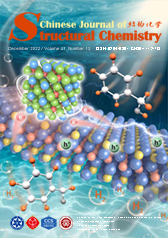
Cover Picture
Ultrathin ZnIn2S4 Nanosheets
Supported Metallic Ni3FeN for Photocatalytic Coupled Selective
Alcohol Oxidation and H2 Evolution
Mengqing Li, Weiliang Qi, Jiuyang Yu, Lijuan Shen, Xuhui Yang, Siqi Liu* and Min-Quan Yang*
Submit a ManuscriptHighly Efficient Photocatalytic CO2 Methanation over Ru-Doped TiO2 with Tunable Oxygen Vacancies
Zheyue Li†, Di Wu†, Wanbing Gong*, Jiayi Li, Shuaikang Sang, Hengjie Liu, Ran Long and Yujie Xiong*
Chin. J. Struct. Chem. 2022, 41, 2212043-2212050 DOI: 10.14102/j.cnki.0254-5861.2022-0212
December 2, 2022
photocatalysis, CO2 methanation, metal doping, titanium oxide, oxygen vacancies
ABSTRACT
Solar-driven
CO2 methanation is an imperative and promising approach to relieve
the global warming and environmental crisis, yet remains a great challenge due
to the low reaction efficiency, unsatisfactory selectivity and poor stability.
In this work, we demonstrate a facile and efficient strategy to prepare
Ru-doped TiO2 photocatalyst with tunable oxygen vacancies using the
ascorbic acid as a reducing agent for the CO2 methanation reaction.
The optimal Ru-TiO2-OV-50 exhibits a remarkable CH4 production rate of 81.7 mmol g-1 h-1 with a 100% CH4 selectivity under a 1.5 W cm-2 light illumination, which is
significantly higher than commercial Ru/TiO2 and other reported
catalysts. We reveal that the superior photocatalytic CO2 methanation performance is mainly due to the synergistic effect of Ru doping
and TiO2 with tunable oxygen vacancies. Impressively, the light
rather than thermal effect is confirmed as the main influencing factor by
experimental studies. In addition, in
situ spectroscopic technology is performed to investigate the CO2 methanation reaction pathway. This work will open an avenue to design and
prepare highly efficient photocatalyst with tunable oxygen vacancies for CO2 conversion and other related applications.







